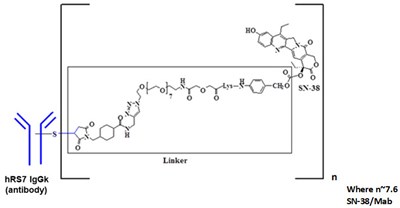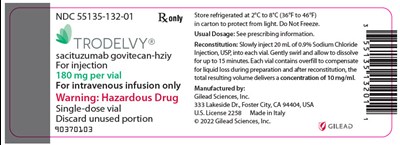Product Images Trodelvy
View Photos of Packaging, Labels & Appearance
Product Label Images
The following 5 images provide visual information about the product associated with Trodelvy NDC 55135-132 by Gilead Sciences, Inc., such as packaging, labeling, and the appearance of the drug itself. This resource could be helpful for medical professionals, pharmacists, and patients seeking to verify medication information and ensure they have the correct product.
trodelvy 02

This appears to be a chart or graph related to chemotherapy treatment, with time in months on the x-axis and number of patients at risk on the y-axis. It seems to compare a treatment called Trodelvy to chemotherapy and shows the number of patients at risk over time for each treatment.*
trodelvy 03

This is a graph showing the efficacy of a treatment called "Trodelvy" compared to chemotherapy over a period of 24 months. The x-axis represents time in months, with intervals of 3 months, and the y-axis represents the number of patients still alive (number of patients at risk). Trodelvy had 267 patients at the beginning of the treatment, while chemotherapy had 262 patients. Over the 24 months, Trodelvy showed higher survival rates with 17 patients still alive, while chemotherapy had only 9 patients still alive. The treatment period also had some censored data, which means some patients were lost or withdrawn from the treatment during the trial, but their data is included up until the point where they withdrew.*
trodelvy 05

This is a description of a drug called sacituzumab govitecan-haly. It is administered by injection for intravenous use only. The drug comes in a 180mg vial and has hazardous warnings. The drug's dosage and administration information is included. The text also describes how to dilute and discard unused portions of the drug. The NDC code for the drug is 55135-132-01. There are also warning signs for hazardous drug use.*
* The product label images have been analyzed using a combination of traditional computing and machine learning techniques. It should be noted that the descriptions provided may not be entirely accurate as they are experimental in nature. Use the information in this page at your own discretion and risk.

